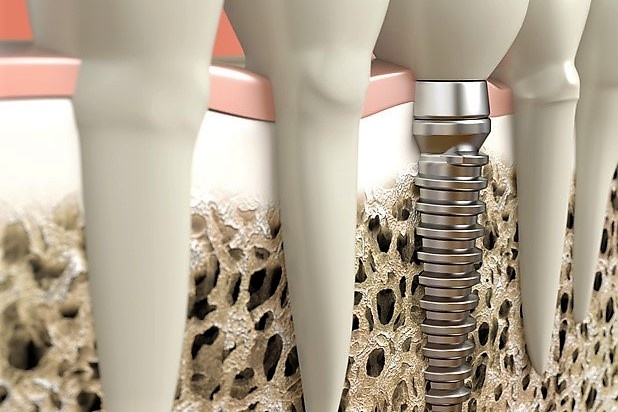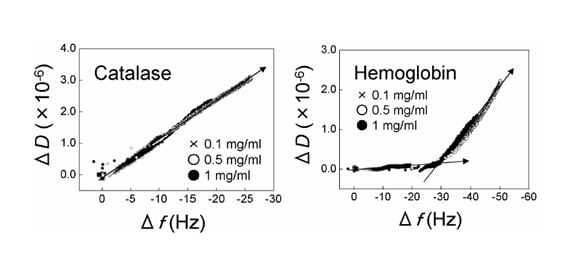
Within biomaterials research and development, hydroxyapatite (HA) is well known for its biocompatible properties, particularly in bone bonding, and for its potency of rapid integration into the human body. Orthopaedic and dental devices are often coated with hydroxyapatite to facilitate integration and acceptance by human tissue.
To help out in the seek for better understanding of protein adsorption and behavior in human tissue/implant applications, QSense has developed ready-to-use sensors coated with a thin, stable, and uniform crystalline Hydroxyapatite film. The coating has also drawn attention from toothpaste manufacturers.
An interesting example of studies on protein behavior onto HA using QCM-D, is the work carried out by a group of researchers in Japan and Sweden. They found that using QCM-D with a HA coated sensor was particularly useful for analysis of liquid phase changes of proteins on the surface. Liquid phase protein adsorption behavior affect biocompatibility of biomaterials and medical devices, and is therefore of biological, medical and industrial Importance. In all, six different proteins (HSA, Catalase, IgG, Hemoglobin, Lysozyme and Cytochrome c) were investigated and the results of this work has been published in the paper "Protein Adsorption on Hydroxyapatite Nano-crystals with Quartz Crystal Microbalance Technique" (Key Engineering Materials, Vols 361-363 (2008) pp 1119-1122).
The proteins exhibited very different behavior patterns in relation to adsorption. The acidic proteins (HAS and Catalase) adsorbed as a monolayer, where the internal structure remained unchanged. This is seen as a straight line in the Q-Sense-unique ΔD/Δf plots. For the neutral and basic proteins, notably Hemoglobin, the same plot clearly showed two distinct adsorption phases. This is because the neutral and basic proteins could cause conformational changes with the adsorbed amount of proteins. Different regions identified in the ΔD/Δf plot reflect different rigidity of the protein film during adsorption, usually caused by changes in water content and/or structural properties.
The researchers concluded that the QCM-D technique plays an important role in understanding the interaction between proteins and the HA surface.
Compared to QCM, QCM-D measures an additional parameter, and provides more information about the system under study.
Discover how QCM-D analysis reveals real-time etching dynamics, helping optimize cleaning processes and protect surfaces from unwanted damage.
Discover how QSense QCM-D helps tackle fouling challenges across industries
Discover how QCM-D enables real-time, label-free analysis of supported lipid membrane formation, structure, and dynamics for advanced research
Learn how QSense QCM-D analysis can reveal membrane fouling dynamics and optimize cleaning strategies for more efficient water treatment
Learn how QSense QCM-D helps detect and prevent surface-induced instabilities in biologics. Join our webinar for insights and practical examples.
Learn about the top QSense sensors for analyzing biopharmaceutical drug-surface interactions in the context of IV bags.
Learn about QCM-D, Quartz Crystal Microbalance with Dissipation monitoring - an analytical tool for surface interaction studies at the nanoscale.
Explore QSense QCM-D sensors to optimize cleaning efficiency with real-time insights, enhancing formulations and protocols across various conditions.
